The Japanese government said that much more needs to be done to prepare for a possible ‘megaquake’ to reduce the feared death toll of up to 300,000 people.
Quakes are extremely hard to predict, but in January a government panel marginally increased the probability of a major jolt in the Nankai Trough off Japan in the next 30 years to 75-82 percent.
The government then released a new estimate in March saying that such a megaquake and subsequent tsunami could cause as many as 298,000 deaths and damages of up to $2 trillion.
In 2014 the Central Disaster Management Council issued a preparedness plan recommending a series of measures that, it was hoped, would reduce deaths by 80 percent.
But the government has said that so far the steps taken would only cut the toll by 20 percent, Kyodo news agency reported, and an updated preparedness plan was issued on Tuesday.
This recommended accelerated efforts including constructing embankments and evacuation buildings as well as more regular drills to improve public readiness.
‘It is necessary for the nation, municipalities, companies and non-profits to come together and take measures in order to save as many lives as possible,’ Prime Minister Shigeru Ishiba told a government meeting, local media reported.
The Nankai Trough is a 500-mile undersea gully running parallel to Japan’s Pacific coast where one tectonic plate is ‘subducting’ – slowly slipping – underneath another.
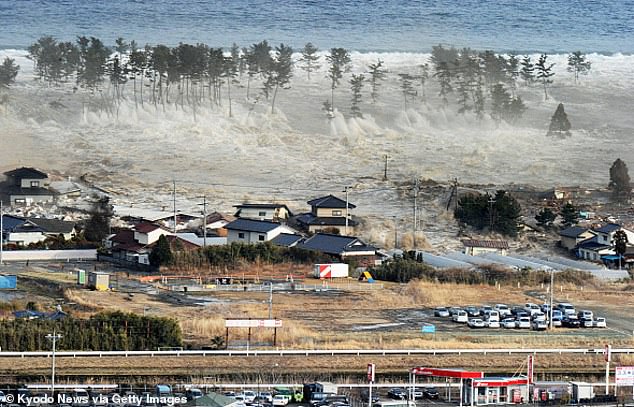
The Japanese government said that much more needs to be done to prepare for a possible ‘megaquake’ to reduce the feared death toll of up to 300,000 people. Pictured: Massive tsunami waves triggered by a major earthquake in northeastern Japan engulf houses in Natori, March, 2011
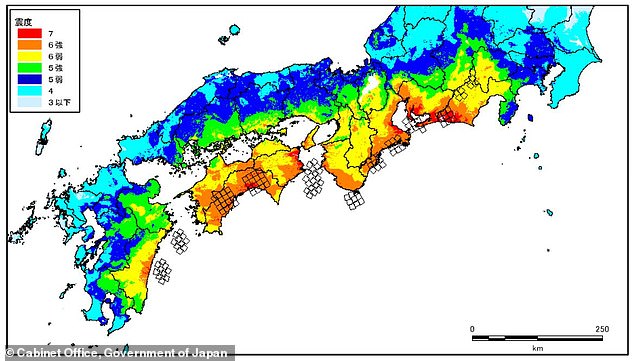
According to a new analysis, an earthquake in the Nankai Trench off Japan’s Pacific coast would have devastating consequences. This map shows the intensity of tremors according to Japan’s seven-point scale
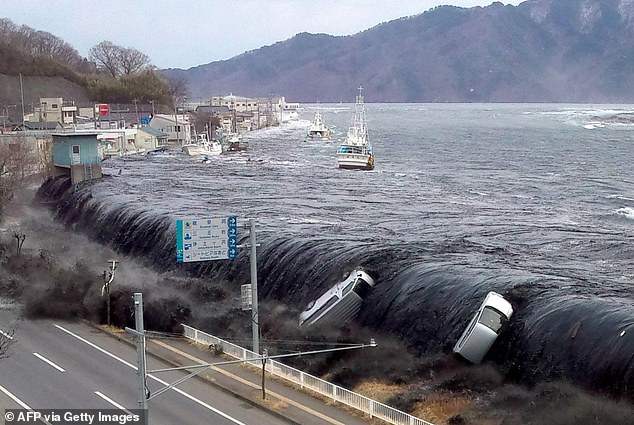
The government believes that an earthquake in the Nankai Trench would produce a tsunami more destructive than the 2011 Tohoku earthquake
Over the past 1,400 years, megaquakes in the Nankai Trough have occurred every 100 to 200 years. The last one was in 1946.
The Japan Meteorological Association (JMA) last August issued its first advisory warning that the likelihood had risen but it was lifted again after a week.
Some foreign tourists have been holding off coming to Japan this summer by unfounded fears spurred on social media that a major quake is imminent.
Causing particular concern is a manga comic reissued in 2021 which predicted a major disaster on July 5, 2025.
Hong Kong-based Greater Bay Airlines reduced flights to Japan because ‘demand has rapidly decreased’, a local tourism official told AFP in May.
The number of visitors to Japan from Hong Kong to Japan fell 11.2 percent in May year-on-year, according to the tourism office.
Those from mainland China soared 44.8 percent, however, while arrivals from South Korea rose 11.8 percent.
‘It is impossible with current science to predict earthquakes by specifying the location, time, and magnitude of an earthquake, and to say that an earthquake will or will not occur,’ Ryoichi Nomura, head of the JMA, said in May.
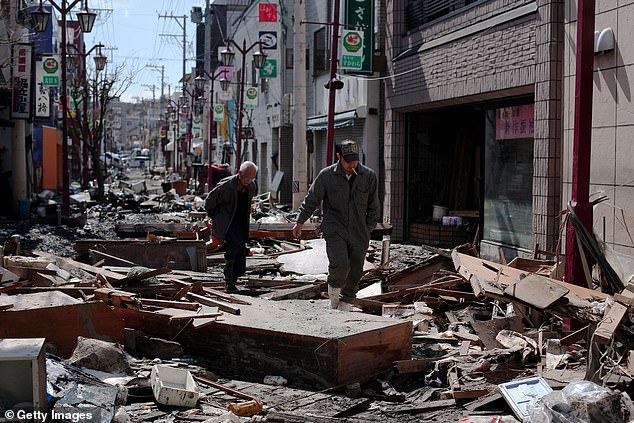
Two men walk through the rubble and debris on March 18, 2011 in Ishinomaki, Japan after a quake triggered a tsunami wave which engulfed large parts of north-eastern Japan
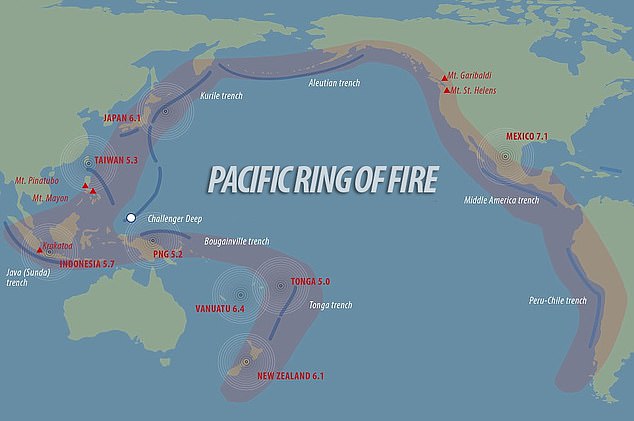
Japan sits directly on the Pacific Ring of Fire, a belt of intense seismic activity. One of the most dangerous regions is the 600-mile (900km) section known as the Nankai Trough which produces megaquakes once every 100 to 200 years
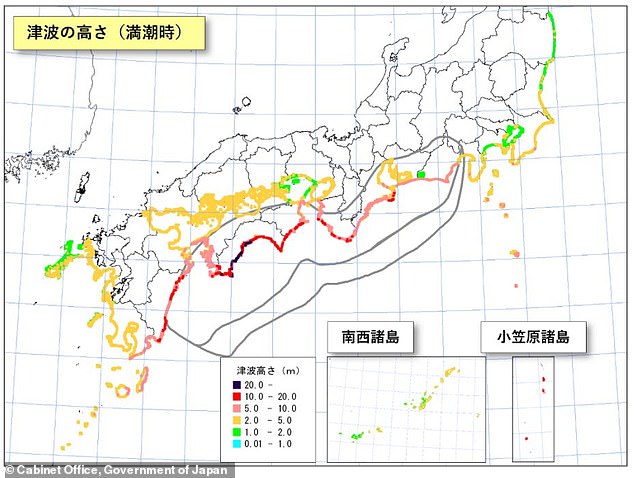
The most dangerous aspect of the earthquake would be the tsunami wave that would hit Japan. This map shows the expected height of the tsunami wave with black regions showing waves above 20m and red showing waves from 10-20m in height
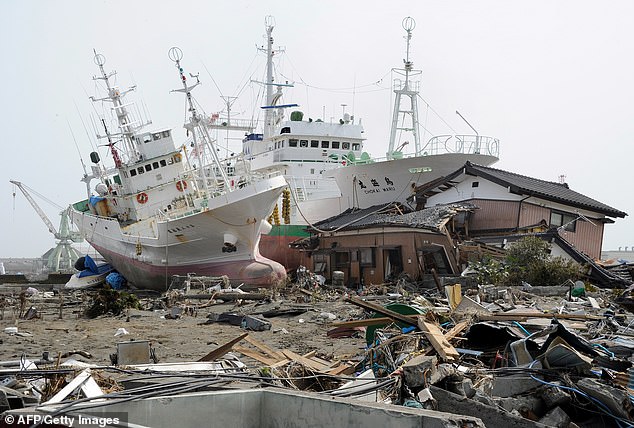
In 2011, a magnitude nine earthquake struck about 81 miles off the coast beneath the North Pacific. The earthquake produced waves up to 132ft tall in some places and killed 15,500 people. Pictured: Fishing boats washed up by the tsunami in Miyagi Prefecture
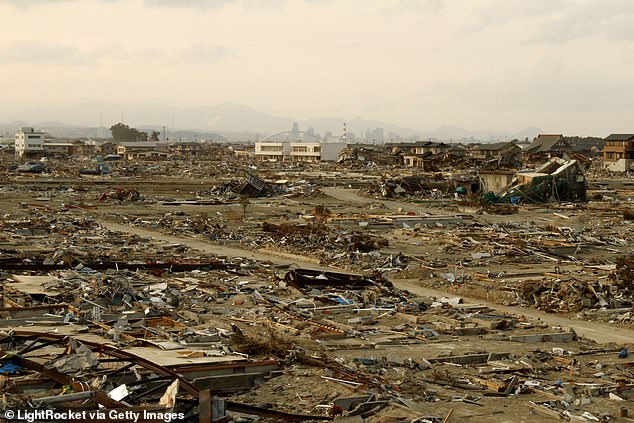
Yuriage district that was devastated by the earthquake and tsunami that hit northeastern Japan on March 11, 2011
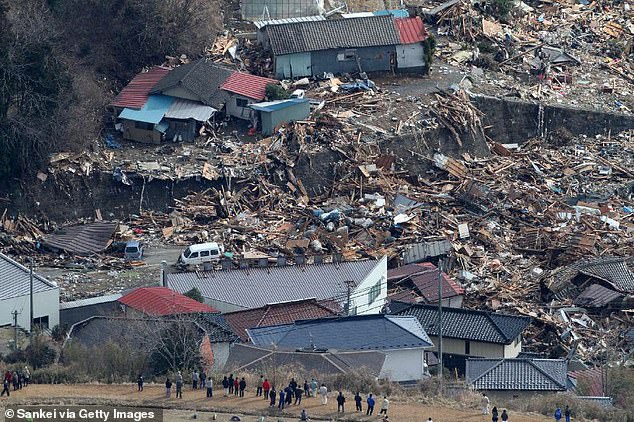
In this aerial image, people look at destroyed houses on March 12, 2011 in Minamisanriku, Miyagi, Japan
‘We ask the public to take certain steps so that you can cope with earthquakes no matter when they occur. But we also strongly urge the public not make irrational actions driven by anxiety.’
In 2011, a magnitude nine earthquake struck about 81 miles off the coast beneath the North Pacific.
The earthquake produced waves up to 132ft tall in some places and killed 15,500 people.
In addition, the flooding caused the meltdown of three nuclear reactors at the Fukushima power plant, releasing toxic waste into the environment and forcing thousands to flee their homes.
However, a megaquake in Nankai Trench could be even more devastating than the 2011 Earthquake – the most powerful tremor in history.












